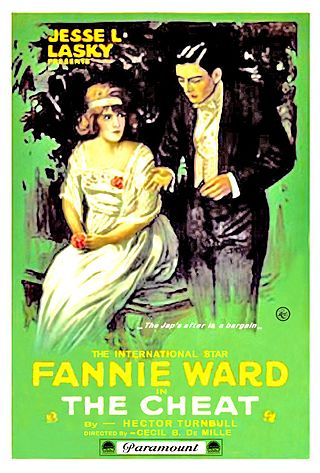
The Cheat is a 1915 American silent drama film directed by Cecil B. DeMille, starring Fannie Ward, Sessue Hayakawa, and Jack Dean, Ward's real-life husband.

Frederick Tyrone Edmond Power Sr. was an English-born American stage and screen actor, known professionally as Tyrone Power. He is now usually referred to as Tyrone Power Sr. to differentiate him from his son, actor Tyrone Power. He was thrice widowed.

Edith Marie Blossom MacDonald, also known as Blossom Rock, was an American actress of vaudeville, stage, film and television. During her career she was also billed as Marie Blake or Blossom MacDonald. Her younger sister was screen actress and singer Jeanette MacDonald. Rock is probably best known for her role as "Grandmama" on the 1960s macabre/black comedy sitcom The Addams Family.
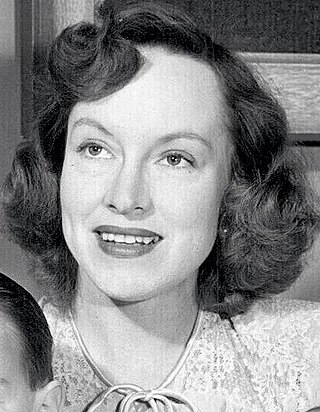
Virginia Lee Gregg was an American actress known for her many roles in radio dramas and television series.

The Blot is a 1921 American silent drama film directed by Lois Weber, who also co-wrote and produced the film. The film tackles the social problem of genteel poverty, focusing on a struggling family. It stars Philip Hubbard, Margaret McWade, Claire Windsor, and Louis Calhern.
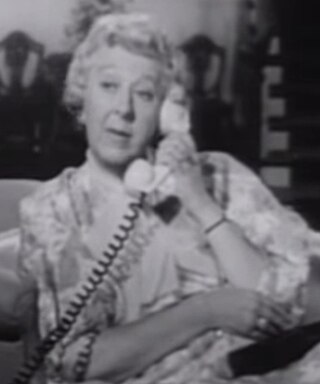
Norma Varden Shackleton, known professionally as Norma Varden, was an English-American actress with a long film career.

Barbara Bedford was an American actress who appeared in dozens of silent movies. Her career declined after the introduction of sound, but she continued to appear in small roles until 1945.

Sheila Bromley, also billed early in her career as Sheila LeGay, Sheila Manners, Sheila Mannors or Sheila Manors, was an American television and film actress. She is best known for her roles in B-movies, mostly Westerns of the era.

Vera Lewis was an American film and stage actress, beginning in the silent film era. She appeared in more than 180 films from 1915 to 1947. She was married to actor Ralph Lewis.

Maudie Prickett was an American character actress who performed in over 300 stage, film, and television productions during a career that spanned nearly four decades.

Rafaela Ottiano was an Italian-American actress. She was best known for her role as Grusinskaya's maid Suzette in Grand Hotel (1932) and as Russian Rita in She Done Him Wrong (1933).
The Hand That Rocks the Cradle is an American silent drama film released in 1917. It was written, produced and directed by the husband and wife team Phillips Smalley and Lois Weber, who also play the lead roles. It was made in Hollywood under the working title Is a Woman a Person?
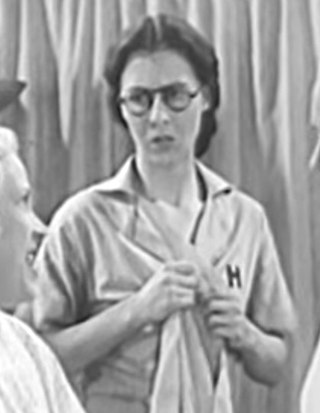
Mary Field was an American film actress who primarily appeared in supporting roles.
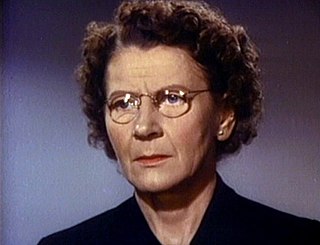
Edith Evanson was an American actress of film, character and television during the Golden Age of Hollywood.

Nora Marlowe was an American film and television character actress.

Bodil Rosing was a Danish stage and American film actress in the silent and sound eras.
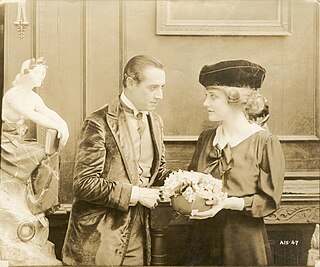
The Rise of Jennie Cushing is a 1917 American silent drama film directed by Maurice Tourneur, produced by Famous Players–Lasky, and distributed by Artcraft Pictures, an affiliate of Paramount Pictures. The story based upon the novel The Rise of Jennie Cushing by Mary Watts and stars Broadway's Elsie Ferguson. The film marked Ferguson's second motion picture. It is a lost film.
John Needham's Double is an 1885 novel and 1891 play by Joseph Hatton, and 1916 silent film.

Margaret McWade was an American stage and film actress. She began her career in vaudeville in the early 1890s. Her most memorable role was as one of The Pixilated Sisters, a comedic stage act with actress Margaret Seddon. Later in 1936, they reprised their roles in the movie Mr. Deeds Goes to Town.

Shoes is a 1916 silent film drama directed by Lois Weber and starring Mary MacLaren. It was distributed by the Universal Film Manufacturing Company and produced by Bluebird Photoplays, a subsidiary of Universal based in New York City and with access to Universal's studio facilities in Fort Lee, New Jersey as well as in California. Shoes was added to the National Film Registry in 2014.



















